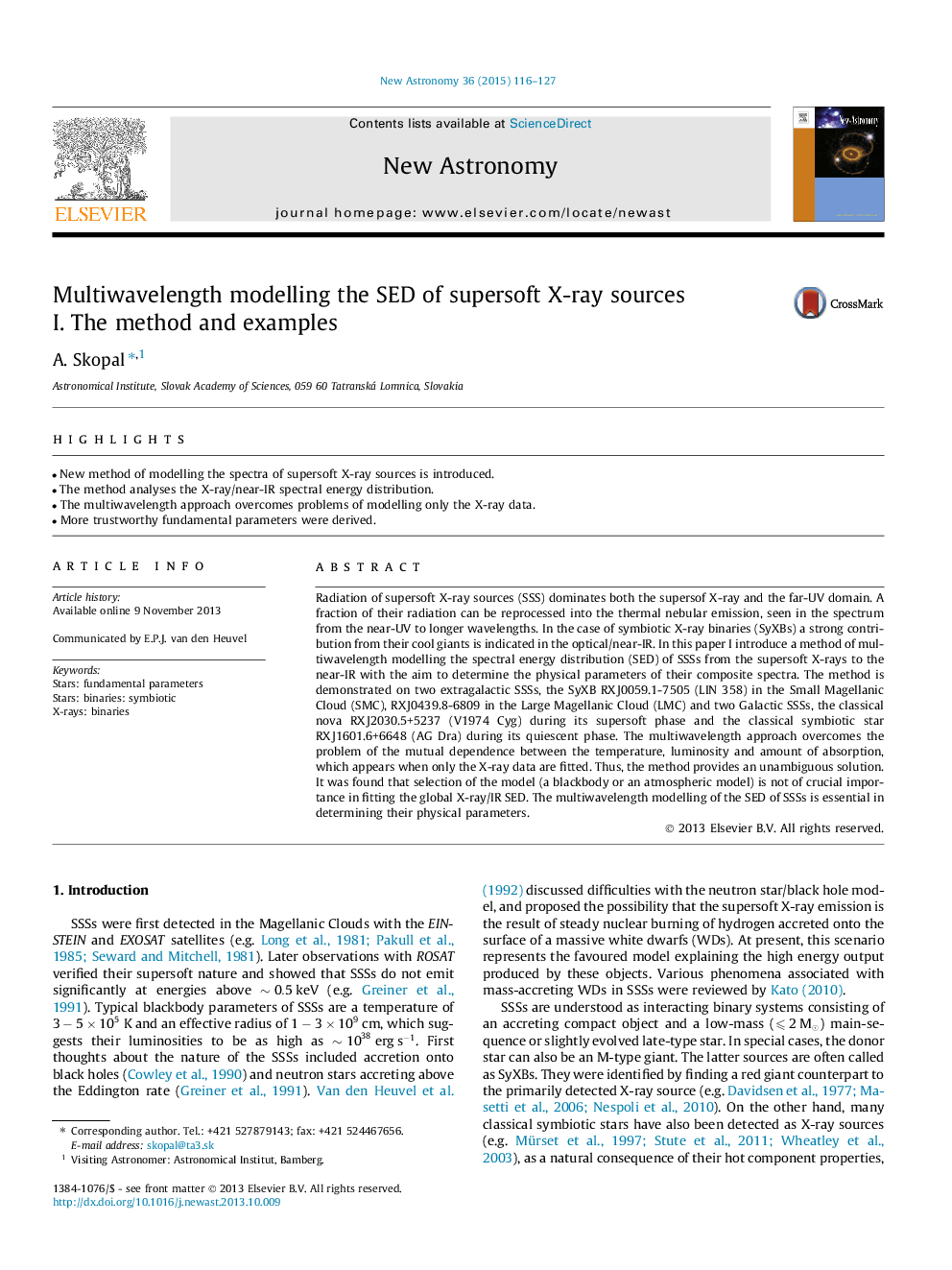| Article ID | Journal | Published Year | Pages | File Type |
|---|---|---|---|---|
| 1778888 | New Astronomy | 2015 | 12 Pages |
•New method of modelling the spectra of supersoft X-ray sources is introduced.•The method analyses the X-ray/near-IR spectral energy distribution.•The multiwavelength approach overcomes problems of modelling only the X-ray data.•More trustworthy fundamental parameters were derived.
Radiation of supersoft X-ray sources (SSS) dominates both the supersof X-ray and the far-UV domain. A fraction of their radiation can be reprocessed into the thermal nebular emission, seen in the spectrum from the near-UV to longer wavelengths. In the case of symbiotic X-ray binaries (SyXBs) a strong contribution from their cool giants is indicated in the optical/near-IR. In this paper I introduce a method of multiwavelength modelling the spectral energy distribution (SED) of SSSs from the supersoft X-rays to the near-IR with the aim to determine the physical parameters of their composite spectra. The method is demonstrated on two extragalactic SSSs, the SyXB RX J0059.1-7505 (LIN 358) in the Small Magellanic Cloud (SMC), RX J0439.8-6809 in the Large Magellanic Cloud (LMC) and two Galactic SSSs, the classical nova RX J2030.5+5237 (V1974 Cyg) during its supersoft phase and the classical symbiotic star RX J1601.6+6648 (AG Dra) during its quiescent phase. The multiwavelength approach overcomes the problem of the mutual dependence between the temperature, luminosity and amount of absorption, which appears when only the X-ray data are fitted. Thus, the method provides an unambiguous solution. It was found that selection of the model (a blackbody or an atmospheric model) is not of crucial importance in fitting the global X-ray/IR SED. The multiwavelength modelling of the SED of SSSs is essential in determining their physical parameters.
